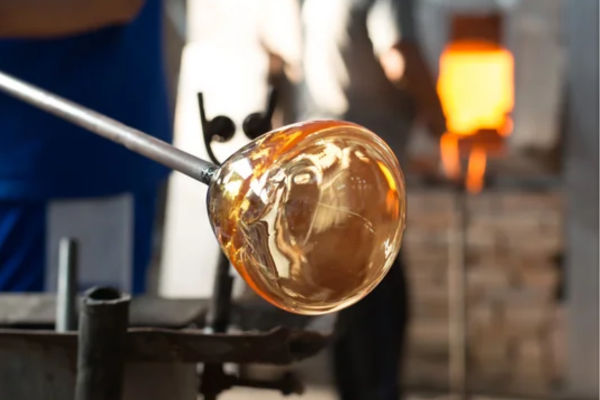Introduction
Glass blowing is a centuries-old craft that combines precision, skill, and creativity to produce stunning works of art. From delicate vases to intricate sculptures, the art of glass blowing captivates both creators and admirers alike. In this article, we will delve into the rich history, intricate process, and enduring allure of glass blowing.
History of Glass Blowing:
The origins of glass blowing can be traced back to the ancient Near East, around the 1st century BCE. Historians believe that the technique was first developed in the region of Syria, where craftsmen discovered that molten glass could be shaped and manipulated using simple tools such as blowpipes and molds. From there, the art of glass blowing spread throughout the Roman Empire, flourishing in cities like Rome and Alexandria.
The Glass Blowing Process:
The process of glass blowing begins with the gathering of molten glass from a furnace onto the end of a blowpipe. The glassblower then blows air into the pipe, creating a bubble in the molten glass. This bubble serves as the foundation for shaping the glass into its desired form.
Next, the glassblower uses a variety of tools, such as jacks and paddles, to shape and manipulate the molten glass. This requires precision and skill, as even the slightest movement can alter the final outcome. Once the basic shape has been formed, the glass is transferred to an annealing oven, where it is slowly cooled to room temperature. This process helps to relieve internal stresses in the glass and prevent it from cracking or breaking.
Types of Glass Blowing:
There are many different techniques and styles of glass blowing, each with its own unique characteristics and challenges. Some of the most popular techniques include:
Free Blowing: In this technique, the glassblower works without the use of molds, relying solely on their skill and dexterity to shape the glass.
Mold Blowing: This technique involves blowing molten glass into a mold, which gives the final piece its shape and texture.
Hot Sculpting: In hot sculpting, the glassblower uses heat and gravity to manipulate the glass into sculptural forms, often working with the glass while it is still molten.
Lampworking: Also known as flame working, lampworking involves using a torch to melt and shape glass rods and tubes into intricate designs.
The Enduring Allure of Glass Blowing:
What sets glass blowing apart from other forms of art is its unique combination of craftsmanship and creativity. Unlike painting or sculpture, which can be created using pre-existing materials, glass blowing requires the artist to work directly with the molten glass, shaping and manipulating it in real time.
Furthermore, the translucent quality of glass gives it a magical quality that is unmatched by any other medium. Whether it’s the play of light on the surface of a vase or the intricate patterns within a glass sculpture, there is something truly mesmerizing about the way that glass interacts with its environment.
Conclusion
Glass blowing transcends mere craftsmanship; it embodies a profound artistry that demands patience, precision, and imagination. From its humble beginnings in antiquity to the skilled artisans of today, the allure of glass blowing persists, enchanting and igniting inspiration across cultures and generations. It serves as a testament to the enduring creativity of humanity and the boundless possibilities of the medium. Whether you find yourself immersed in the meticulous process of shaping molten glass or simply marveling at the exquisite beauty of finished pieces, the magic of this ancient craft resonates deeply. It bridges the gap between the past and the present, reminding us of our shared human heritage and the timeless pursuit of aesthetic excellence. So whether you’re a seasoned glassblower honing your skills or an admirer entranced by the elegance of glass art, let the artistry of glass blowing continue to captivate, inspire, and unite us in appreciation of its enduring splendor.




